Since I started blogging nearly 7 years ago, the post that has received the most attention wasn’t some exotic location, epic once in a lifetime animal photo or mind blowing sunset. It was a post about a flowering Kapok Tree. Up to now it has received over a whopping 20 000 page views. I’ve been wanting to do another post but the problem was that I haven’t had another chance of encountering one while it is in flower and having my camera on hand. A camping weekend at Sitrusoewer outside Kirkwood in the Eastern Cape was my chance. There were a couple of trees above the campsite and one afternoon I took my camera for a walk and snapped a few pics.
I had a few people tell me on the other post that the tree in the post isn’t a Kapok Tree. A little bit of research and I came to the conclusion that there are actually five or six different types of tree that is known as the Kapok Tree. Other than this specific tree (which I will get to just below), a Kapok Tree can also refer to the following:
- Bombax ceiba, an Asian tree with red flowers,
- Calotropis procera, a shrub with white and purple flowers, native to Asia and North Africa, but a weed in other places,
- Ceiba pentandra, a tree of the tropical Americas with white flowers, cultivated particularly in south-east Asia for its seed fibre,
- Two trees with yellow flowers native to northern Australia and Papua New Guinea, the Cochlospermum gillivraei and the Cochlospermum fraseri.
The tree in this post is a Chorisia speciosa of the family Bombacaceae (bombax or baobab Family). It’s common name is a silk floss tree or kapok tree. This Kapok tree is native to Argentina and Brazil but is grown in many tropical areas. It also grows well in parts of southern California and apparently, right here in South Africa.
The tree (being an deciduous exotic to South Africa) drops its leaves just before they put on their spectacular autumn display of five-petaled flowers. The flowers vary from pale pink to rose, purple or burgundy at the tips and grade into a white or ivory. The flowers are then followed by pear shaped capsules filled with many seeds embedded in silky white floss. Hence the silk floss tree name.
The tree’s trunk is mostly green in colour and is covered with big warty triangular spines. These spines turn gray as the tree gets older and will put anybody off from trying to climb one without a ladder or proper protection. Not that you would really want to climb it for any reason. The tree has a straight trunk with an umbrella canopy.
After my research I now also know a lot more about the Kapok / Silk Floss tree. In closing I just want to say, the tree may not really have any specific use, but it does make for a great conversation piece because of the spiny green trunk and beautiful flowers. Enough reason to want one in the garden.

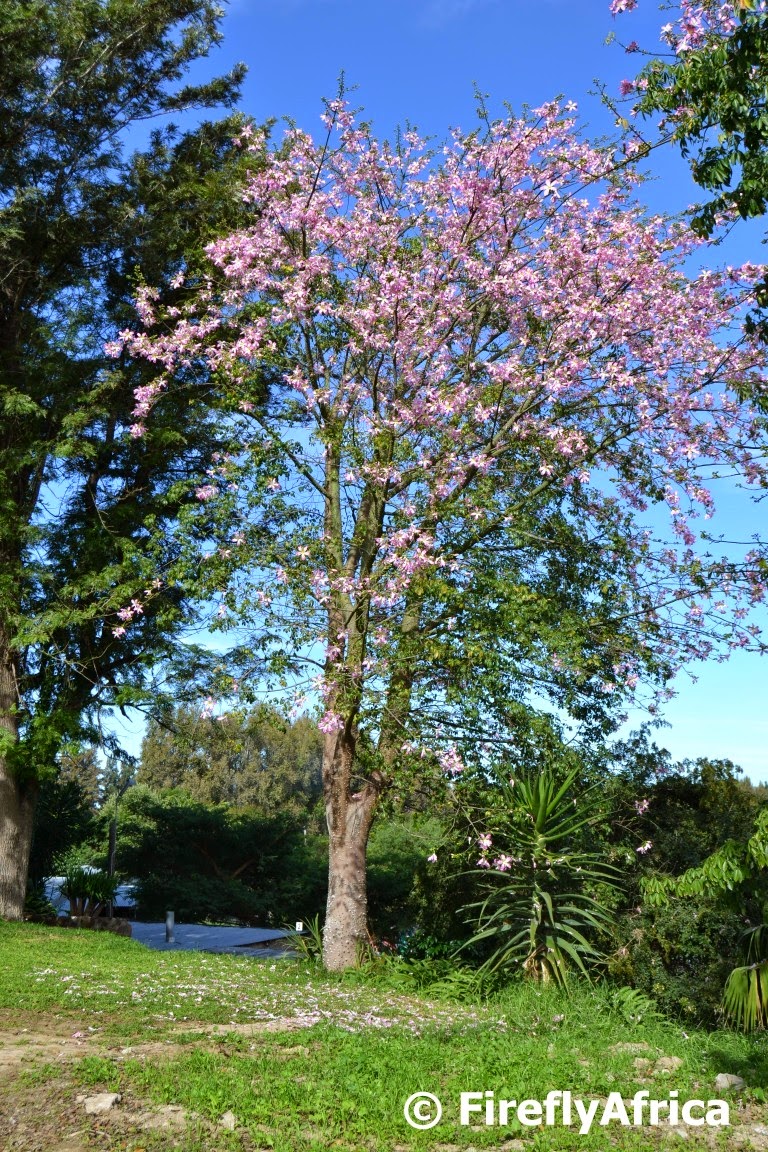
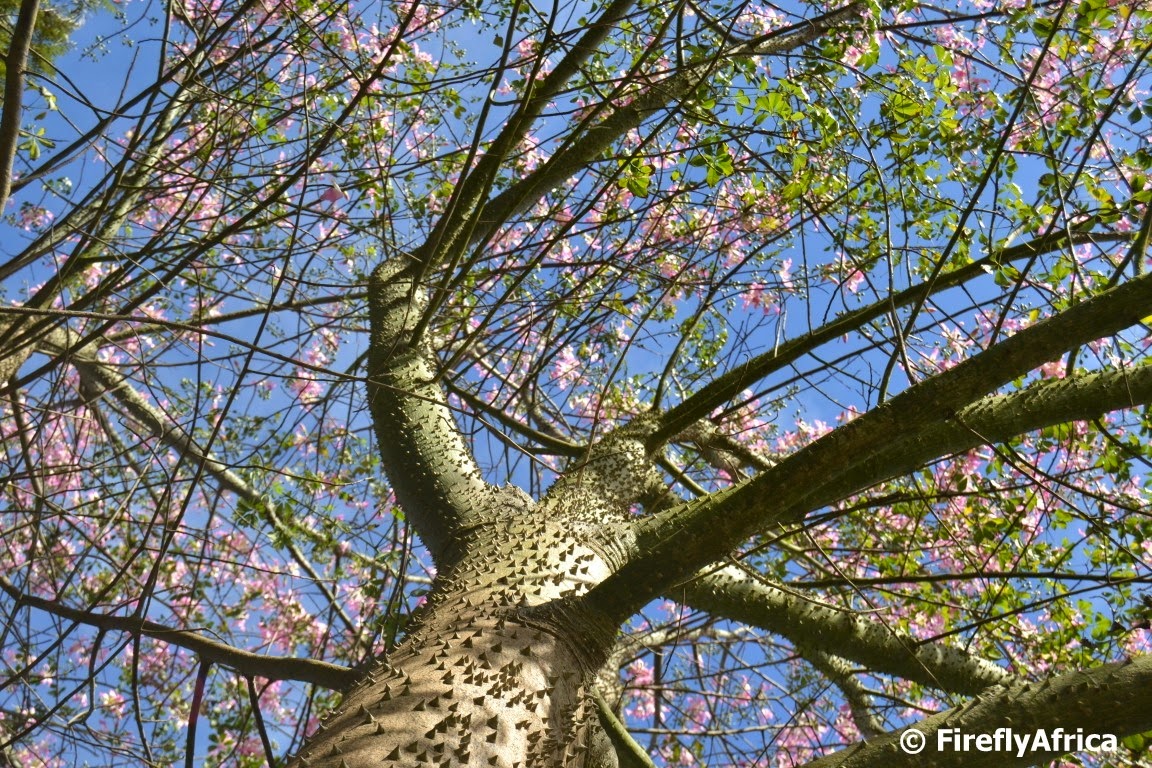
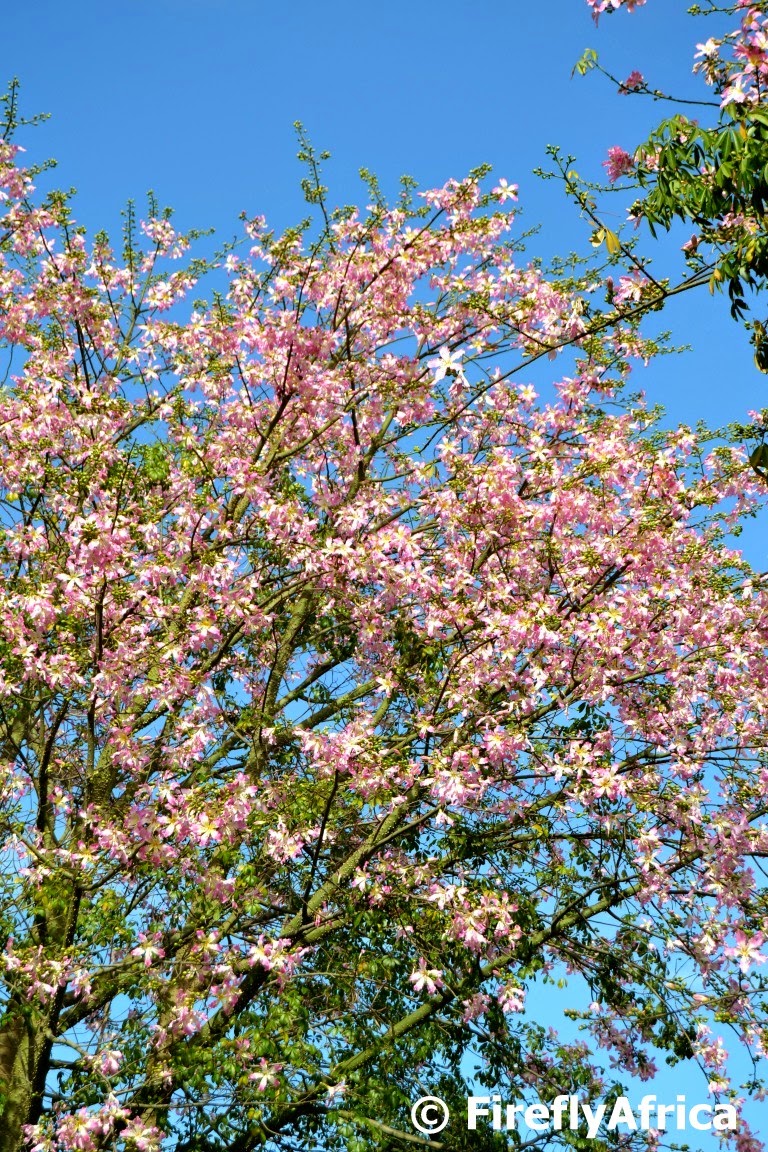
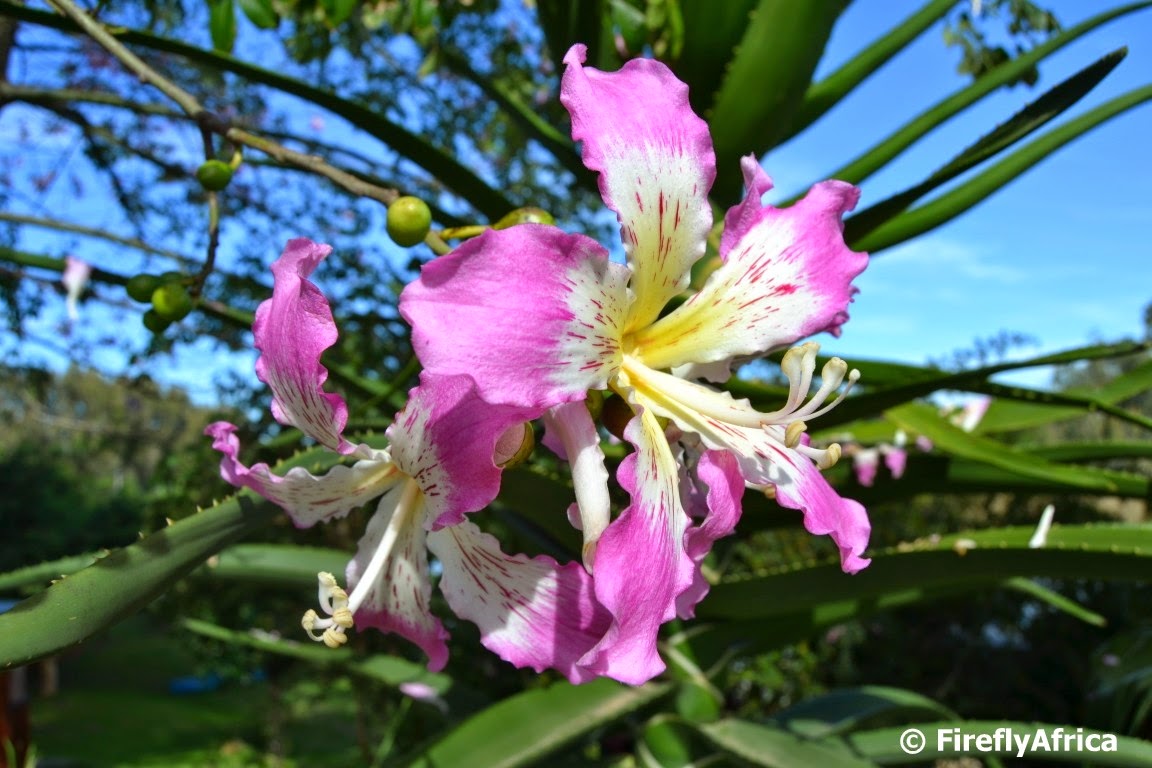
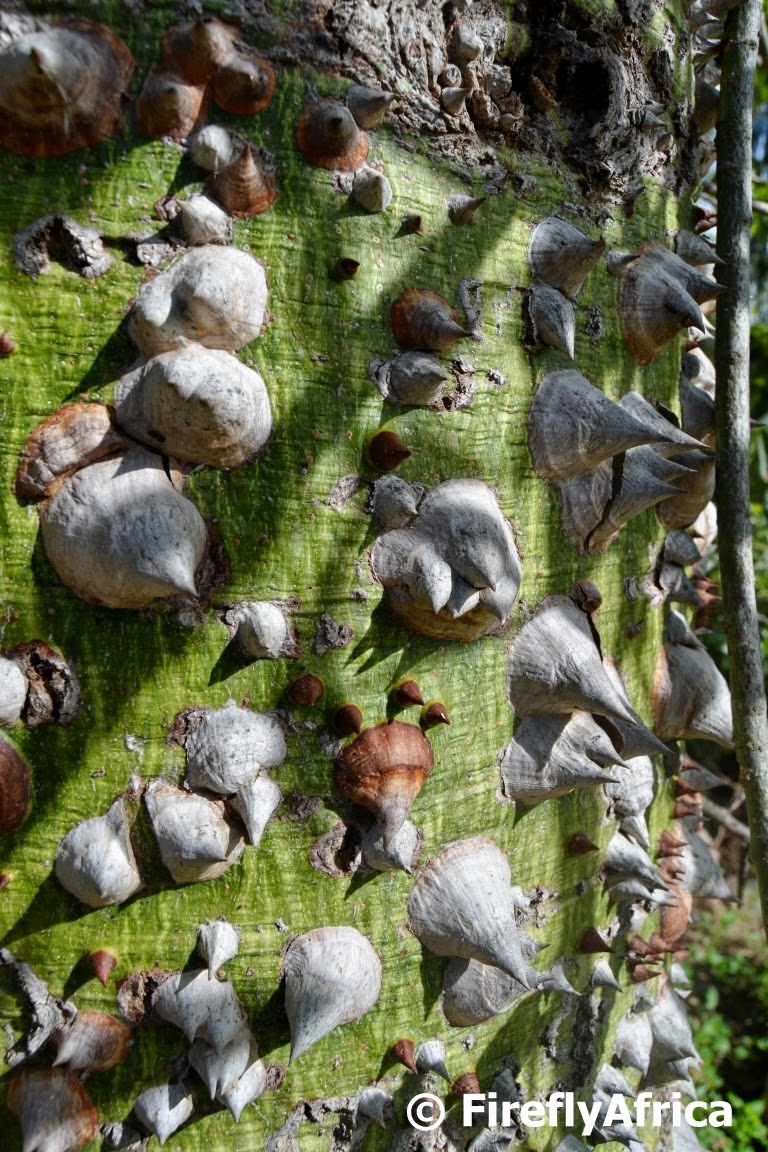
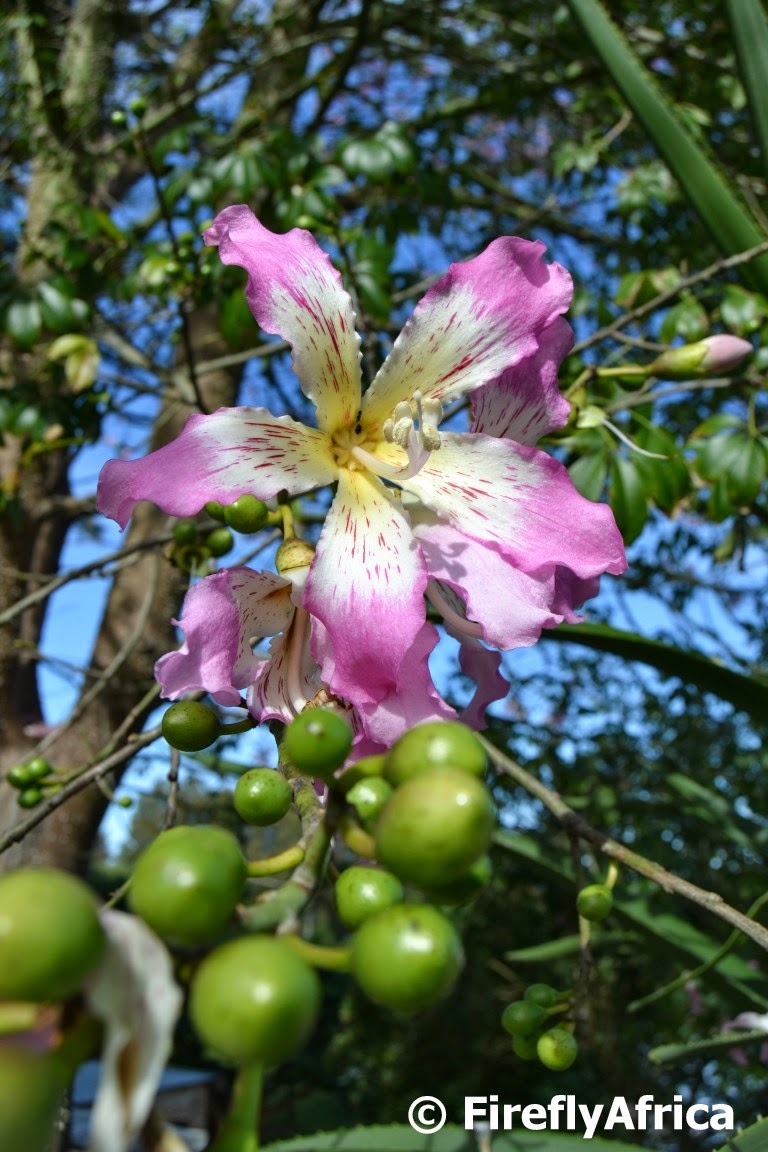
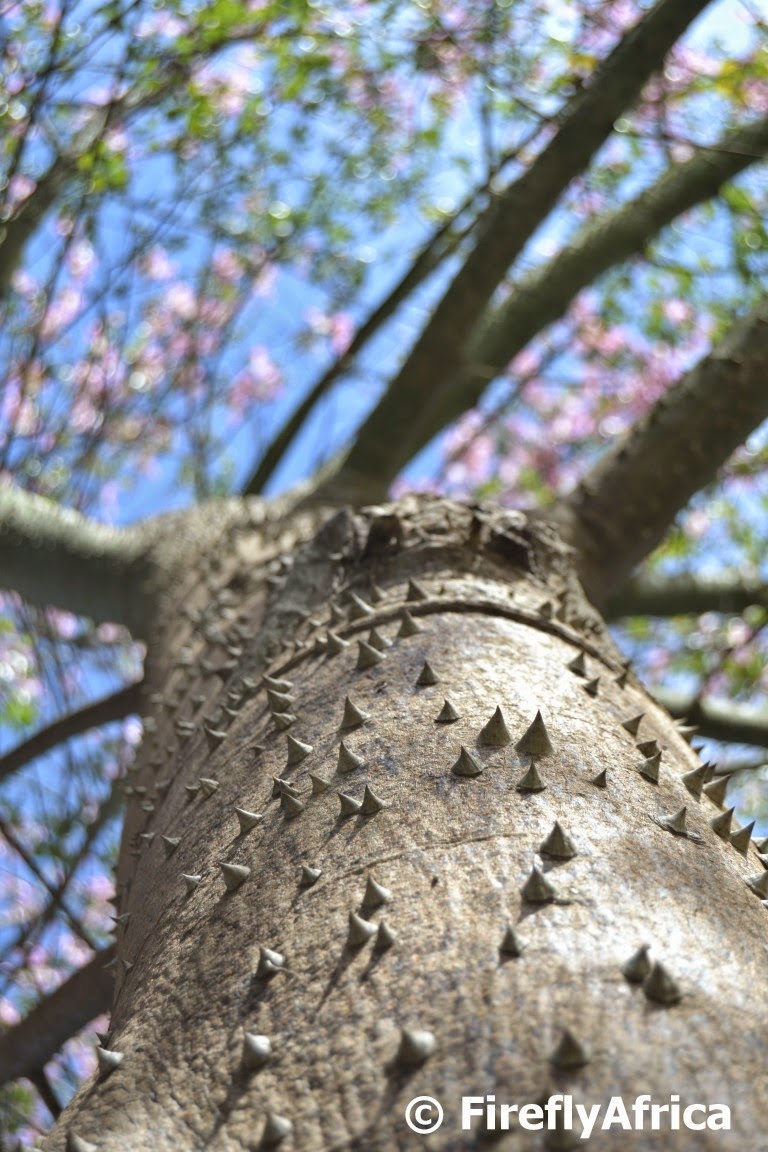
We had one in our garden – the female tree. The ones with thorns are the males (or the other way round) – I was told many years ago. I didn't want the thorn trunks because of children. When ours was a lovely decent size, it was struck by lightening and we had to remove it sadly. The silk floss was used in the old days for kapok mattresses (so my mother told me)!!! They have a beautiful display of pink flowers – gorgeous trees!!
Sure is an interesting tree with gorgeous flowers. Too bad it's not indigenous.
What does it matter if it is not indigenous !!! It attracts bees and that is very good
Absolutely correct Sandy! “Indigenous” is a political term and not a useful biological one. For example, a Fever Tree though found within the polotical borders of South Africa, is just as foreign on the Highveld as a London Plane (which is in fact better suited to a city anyway and does more to absorb pollution). The “hype” over indigenous versus exotic is misleading and seems to have been misunderstood. It is no different to condemning people of other races for being in a location where their ancestors migrated to. There is nothing at all wrong with exotic trees planted in cities, which in any event are no longer a wild landscape, cities are not natural biomes and never will be – cities, with their great variety of plants from around the world, offer tremendous opportunities for local insect and bird life to thrive and purify our polluted air, allowing us to live healthily!